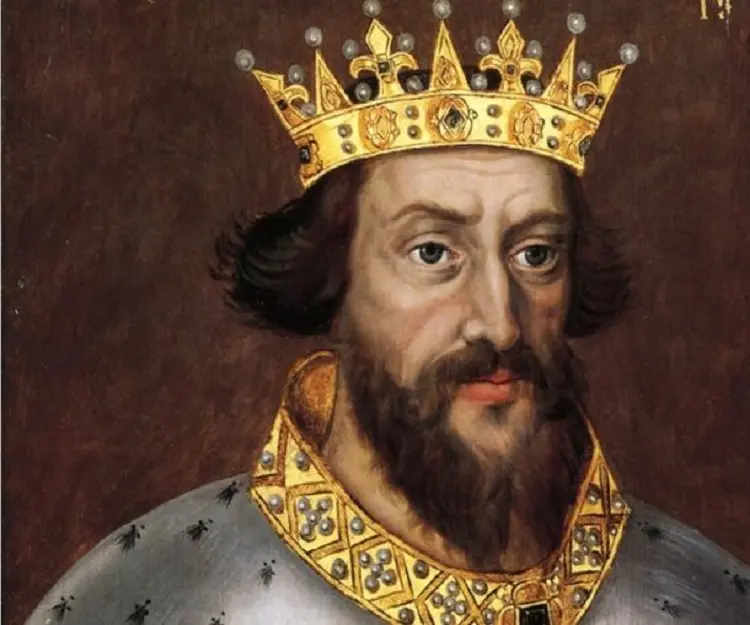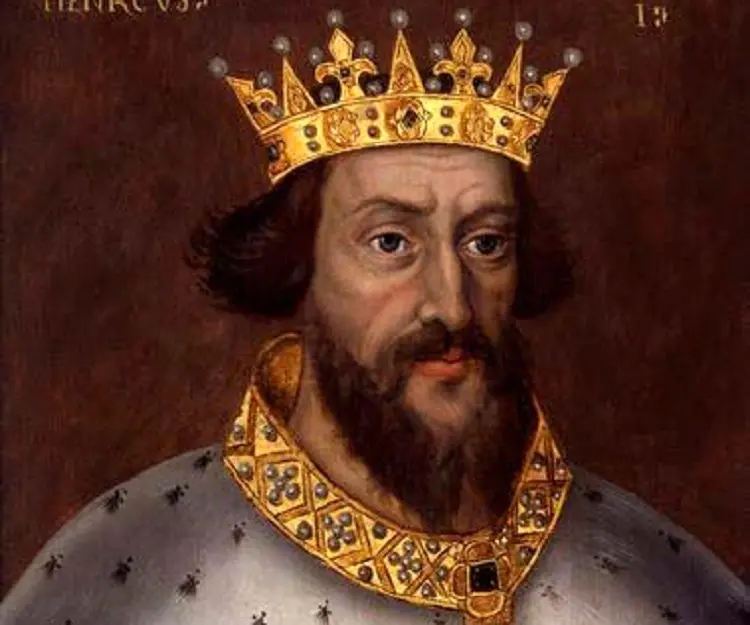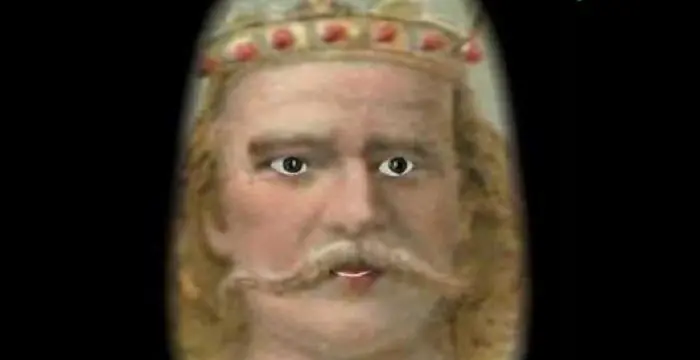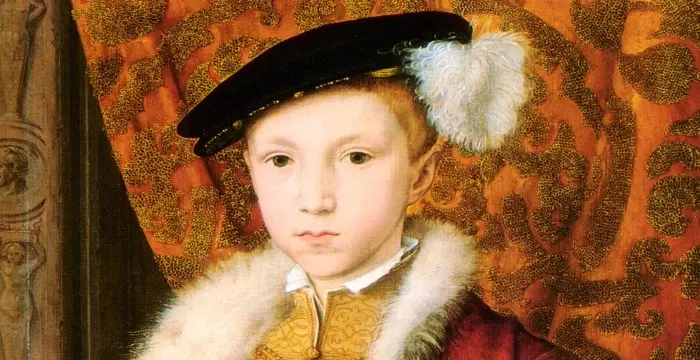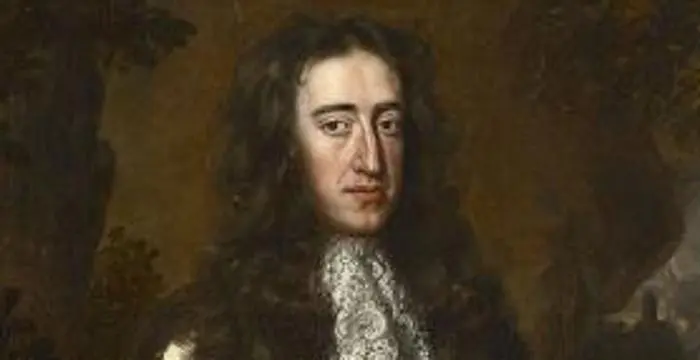
Henry II of England - Emperors, Family and Childhood
Henry II of England's Personal Details
Henry II was the King of England and the founder of the Plantagenet dynasty
| Information | Detail |
|---|---|
| Birthday | March 5, 1133 |
| Died on | July 6, 1189 |
| Nationality | French |
| Famous | Historical Personalities, Emperors & Kings, Emperors, King of England, Kings |
| Spouses | Eleanor of Aquitaine |
| Childrens | Archbishop of York, Count of Poitiers, Duchess of Saxony, Duke of Brittany, Eleanor of England, Geoffrey, Geoffrey II, Henry the Young King, Joan of England, King John, Matilda of England, Morgan (bishop), Queen of Sicily, Richard the Lionheart, William IX, William Longespée |
| Birth Place | Le Mans, France |
| Gender | Male |
| Father | Geoffrey the Fair, Count of Anjou |
| Mother | Empress Matilda |
| Sun Sign | Pisces |
| Born in | Le Mans, France |
| Famous as | King of England |
| Died at Age | 56 |
// Famous Emperors
Sundiata Keita
Sundiata Keita was the founder of the Mali Empire in West Africa. This biography profiles his childhood, early life, struggles, founding of empire, rule, administration, achievements and also gives some fun facts.
Ashoka
Ashoka was the third emperor of the Mauryan Dynasty and ruled almost the entire Indian subcontinent. This biography profiles his childhood, life, reign, achievements and timeline
Murad IV
Murad IV was one of the mighty Sultans in the history of the Ottoman Empire. This biography profiles his childhood, family, accession, rule, administration and timeline.
Henry II of England's photo
Who is Henry II of England?
Henry II, also known as Henry Curtmantle or Henry FitzEmpress, was the King of England (1154–89) and the founder of the Plantagenet dynasty that would rule over the country for almost 300 years after him. His various other titles included Count of Anjou, Count of Maine, Duke of Normandy, Duke of Aquitaine, Count of Nantes, and Lord of Ireland. At different points in his life he had control over Wales, Scotland, and Brittany as well. Ambitious, energetic, and ruthless, Henry grew up with the same drive as his mother to restore the land and privilege of his royal grandfather, Henry I, becoming an active participant at 14 in her effort to claim the English throne. In 1153, he launched a military expedition to England which resulted in a peace treaty declaring Henry as the heir. He became the king a year later. After two decades of infighting and unrest known as ‘The Anarchy’, Henry brought law and order to the country and expanded her boundaries to create the Angevin Empire. He raised minor lords to important administrative positions, paving the way for modern bureaucracy. His legal reforms laid the foundation for the ‘English Common Law’. The later years of his reign are marred by his sons’ rebellion against him. Though he crushed their first attempt, he eventually had to agree to completely surrender and retreat to Chinon in Anjou where he died.
// Famous King of England
Harold Godwinson
Harold Godwinson was an Anglo Saxon King of England in the 11th Century. Check out this biography to know about his birthday, childhood, family life, achievements and fun facts about him.
Edward VI of England
Edward VI served as the King of England, from 1547 until his death in 1553. Check out this biography to learn in details about his life, his works as a king and timeline
William III of England
William III was the stadtholder of the main provinces of the Dutch Republic and the king of England, Ireland, and Scotland (King William II of Scotland). Check out this biography to know more about his childhood, family, life history, etc.
Childhood & Early Life
Henry was born on March 5, 1133, at Le Mans in France to Empress Matilda and Geoffrey V, Count of Anjou, Touraine, and Maine. He was the eldest of three brothers, Geoffrey VI and William being the other two. His claim to the English throne came through his maternal grandfather and Matilda’s father, Henry I. The King of the English during the Anarchy, Stephen of Blois, was his uncle.
After her father’s death in 1135, Matilda was named the successor but Stephen promptly occupied the English throne and was recognised as the Duke of Normandy. The situation quickly degenerated into a civil war. Geoffrey, feeling the time was correct for an attack, took control of the duchy of Normandy, while on a different front, Matilda and her half-brother Robert of Gloucester continued their struggle against Stephen.
It is quite likely that Henry spent the early years of his life in his mother’s household and when she moved to Normandy, he accompanied her. At about seven, He came to stay in Anjou with his father.
In late 1142, Henry, accompanied by Robert, went to Bristol, following the instruction of his father. The South-Western English town was the epicentre of Angevin opposition to Stephen and the importance of Henry’s presence there was more than symbolic. It stopped the criticism against Geoffrey that he was not doing enough in the war against England. Henry returned to Anjou in 1143 or 1144.
Though he lacked both his mother’s seriousness and his father’s charm, Henry was forceful and confident. He studied under some of the best tutors of the time, grammarian Peter of Saintes and scholastic philosopher William Conches. He was instructed by a magister named Master Matthew at Robert’s house. Besides the formal education, he studied the canons of St Augustine's in Bristol.
He came back to England in 1147 with a small group of mercenaries and invaded Wiltshire. Though it did cause some initial panic, the attack did not surmount to anything. Henry was not able to even pay his mercenaries and neither his mother nor Robert was willing to pay off his debts. Surprisingly, he sent an appeal to Stephen who took care of the outstanding wages. Henry retired back to France with his dignity intact.
Accession & Reign
The violence between the factions had simmered down by the late 1140s with barons from both camps suing for individual peace. The English Church was weighing options of promoting a peace treaty. Around this time, Louis VII, the King of France, returned from the Second Crusade. He instantaneously recognised the power Geoffrey has garnered in his absence.
Geoffrey declared Henry as the duke of Normandy in 1150 and Louis retaliated by naming Eustace, one of Stephen’s sons, as the rightful heir to the duchy and instigated an attack on Normandy to rout Henry. Upon his father’s suggestion, Henry accepted Louis as his feudal lord, paying homage to him, and in turn, Louis authorised him as the Duke.
Due to his father’s death in 1151, Henry had to postpone his plans of his second expedition to England for some time. The delay served an ulterior purpose as well. He had expressed his desire to marry Duchess Eleanor of Aquitaine in past. Eleanor was already married to Louis but had not borne him a male heir. Thus Louis pursued annulment of the marriage and was ultimately granted so. Only eight weeks after that, on May 18, Henry wedded Eleanor.
The marriage was not only a personal slight to Louis, but it also jeopardized the future inheritance of his two daughters with Eleanor. The marriage also brought more French lands under Henry’s possession than Louis’. It would create an enmity between the two men and their respective dynasties that would last well beyond their lifetimes.
Henry and Eleanor would have eight children together: five sons, William (born 1153), Henry (1155), Richard (1157), Geoffrey (1158), and John (1166), and three daughters, Matilda (1156), Eleanor (1161), and Joan (1165).
Louis formed a coalition against Henry that included Stephen, Eustace, and Henry’s younger brother, Geoffrey, who claimed that Henry was expropriating him of his inheritance. The ensuing skirmishes only strengthened Henry’s hold on his lands.
He finally travelled back to England in 1153, crossing the sea amid winter storms. Seeing that the active civil war was about break out in the island again, the clergies took initiative and brokered peace between the warring parties. In the summer of 1153, ‘Treaty of Wallingford’ was agreed to between Stephen and Henry at Winchester Cathedral. It made Henry Stephen’s adoptive son and successor and in exchange, the former paid homage to the latter.
Henry inherited the English throne sooner than he had previously imagined, as Stephen died of a stomach disorder on October 25, 1154. He landed on English shore on December 8, and 11 days later, he and Eleanor were crowned the King and Queen of England at Westminster.
In April 1155, the royal court assembled where most of the English nobility swore fealty to Henry. However, several potential rivals still persisted, including his brothers, Geoffrey and William, and Stephen’s remaining son, William. But with their deaths in the coming few years, Henry’s position as the king became relatively secure.
One of the biggest challenges facing the new king was the absolute disarray following the Anarchy. He declared himself as the heir of Henry I, and began reconstruction of his kingdom. The intermediate 19 years of Stephen’s rule were portrayed as chaotic and violent and Stephen was named a usurper. Henry presented himself as a monarch who was welcoming to counsels, consciously setting himself apart from his mother’s method of administration.
He pushed back the territories of the King of Scotland and the local Welsh lords beyond the pre-civil war borders, restoring the Anglo-Norman supremacy in the island,
In 1160, Louis and Henry sought peace with each other through a marriage alliance between Louis’ daughter Margaret and Henry’s eldest surviving son, Young Henry. As the prospect of permanent peace seemed possible between the two, Henry turned his focus towards the Duchy of Brittany and Toulouse. While he did bring the Breton duke to heels, his campaign to Toulouse sparked his rivalry with Louis once more. A second peace treaty was negotiated in 1162, supervised by Pope Alexander III.
The tension between the two rulers continued to persevere throughout the 1160s, and culminated in an open war in 1167. Louis attacked Normandy and a furious Henry reciprocated by putting Chaumont-sur-Epte, a town where Louis stored his military arsenal, to flame.
After a private truce with the French King, Henry looked to consolidate his power in France by betrothing his son John to the daughter of the Count of Savoy and marrying his own daughter Eleanor to Alfonso VIII of Castile.
Henry launched a successful invasion to Ireland in 1171. The treaty of Windsor was signed in 1175, which stipulated, among other things, that the high king of Ireland, Rory O’Connor, would pay homage to Henry.
The Thomas Becket Controversy
Arguably the biggest international incident during Henry II’s reign was the Thomas Becket controversy. Becket, who was one of minor lords raised to power and authority by Henry, was his English Chancellor. After the death of Archbishop of Canterbury Theobald of Bec in 1161, he forced the clergies to accept Becket as archbishop. His feud with the Church was long-standing and he probably believed that, with Becket at the helm, he would be able to impose more control over the Church.
Becket, however, renounced his relationship with the King and turned pious. In 1170, Henry had Young Henry crowned as the Junior King by the Archbishop of York. An enraged Becket excommunicated several supporters of Henry from the Church. Upon hearing of this, Henry infamously remarked, “What miserable drones and traitors have I nourished and promoted in my household, who let their lord be treated with such shameful contempt by a low-born clerk.”
In response, four knights went to Canterbury without a direct order from the king and hacked Becket to death on December 29, 1170. It was a political and administrative disaster that would haunt Henry for years to come.
The Great Revolt & Surrender
All of Henry II’s sons except John rose in rebellion against their father in 1173, with support from Eleanor and Louis. Henry moved quickly and decisively. He imprisoned Eleanor and defeated his sons’ allies one by one. He also performed penance in Becket’s tomb in Canterbury, dubbing the ‘Great Revolt’ as a divine punishment. Louis proposed peace talks in 1174, formally bringing an end to the conflict.
In the years after the ‘Great Revolt’, both Young Henry and Geoffrey died and Richard grew close to Philip, Louis’ son and the assertive and calculating new king of France. It was quite evident that Henry preferred John over Richard. Richard, being well aware of it, demanded to be named his father’s successor, only to be refused repeatedly.
Richard gave formal homage to Philip in front of his father in a peace meeting attended by the nobility of both countries. By now Henry’s health was deteriorating due to a bleeding ulcer, which would prove to be fatal.
Henry II returned to Anjou with Philip and Richard in hot pursuit. The opposing parties met at a negotiation at Ballan, where Henry accepted the offer of complete surrender. He died on July 6, 1189, and was buried in Fontevraud Abbey, where, later, Eleanor and Richard would join him.
Administrative Policies
Though in the early part of his reign Henry relied on his father’s former advisors, he increasingly promoted minor nobles to important roles, thus creating the infrastructural foundation for modern bureaucracy.
He was steady and pragmatic in the changes he brought about to the law of his kingdom. He cracked down on crimes, and delivered justice through exchequer courts and General Eyre.
Personal Life & Legacy
According to contemporary scholars, Henry II was handsome and had freckles and a shock of red hair. Short and stocky, he had bowed legs from riding. The entire Plantagenet dynasty is infamous for their explosive temper, and Henry, the founder, was even more so. Chroniclers have characterised him to be a bully and added that he had a piercing stare and would often appear sullen.
Besides his children with Eleanor, he was the father of Geoffrey (born 1152), Archbishop of York and William Longespée (1176), third Earl of Salisbury from other women.
Though intensely disliked by his contemporaries, Henry is remembered as the first ruler to bring England under one kingship. The Plantagenet dynasty was the longest reigning royal house in the history of the country.
Trivia
Henry was the first ruler to use the title ‘King of England’, rather than previously used ‘King of the English’.
// Famous Kings
Sundiata Keita
Sundiata Keita was the founder of the Mali Empire in West Africa. This biography profiles his childhood, early life, struggles, founding of empire, rule, administration, achievements and also gives some fun facts.
Ashoka
Ashoka was the third emperor of the Mauryan Dynasty and ruled almost the entire Indian subcontinent. This biography profiles his childhood, life, reign, achievements and timeline
Murad IV
Murad IV was one of the mighty Sultans in the history of the Ottoman Empire. This biography profiles his childhood, family, accession, rule, administration and timeline.
Henry II of England biography timelines
- // 5th Mar 1133Henry was born on March 5, 1133, at Le Mans in France to Empress Matilda and Geoffrey V, Count of Anjou, Touraine, and Maine. He was the eldest of three brothers, Geoffrey VI and William being the other two. His claim to the English throne came through his maternal grandfather and Matilda’s father, Henry I. The King of the English during the Anarchy, Stephen of Blois, was his uncle.
- // 1135After her father’s death in 1135, Matilda was named the successor but Stephen promptly occupied the English throne and was recognised as the Duke of Normandy. The situation quickly degenerated into a civil war. Geoffrey, feeling the time was correct for an attack, took control of the duchy of Normandy, while on a different front, Matilda and her half-brother Robert of Gloucester continued their struggle against Stephen.
- // 1142In late 1142, Henry, accompanied by Robert, went to Bristol, following the instruction of his father. The South-Western English town was the epicentre of Angevin opposition to Stephen and the importance of Henry’s presence there was more than symbolic. It stopped the criticism against Geoffrey that he was not doing enough in the war against England. Henry returned to Anjou in 1143 or 1144.
- // 1147He came back to England in 1147 with a small group of mercenaries and invaded Wiltshire. Though it did cause some initial panic, the attack did not surmount to anything. Henry was not able to even pay his mercenaries and neither his mother nor Robert was willing to pay off his debts. Surprisingly, he sent an appeal to Stephen who took care of the outstanding wages. Henry retired back to France with his dignity intact.
- // 1150Geoffrey declared Henry as the duke of Normandy in 1150 and Louis retaliated by naming Eustace, one of Stephen’s sons, as the rightful heir to the duchy and instigated an attack on Normandy to rout Henry. Upon his father’s suggestion, Henry accepted Louis as his feudal lord, paying homage to him, and in turn, Louis authorised him as the Duke.
- // 1151Due to his father’s death in 1151, Henry had to postpone his plans of his second expedition to England for some time. The delay served an ulterior purpose as well. He had expressed his desire to marry Duchess Eleanor of Aquitaine in past. Eleanor was already married to Louis but had not borne him a male heir. Thus Louis pursued annulment of the marriage and was ultimately granted so. Only eight weeks after that, on May 18, Henry wedded Eleanor.
- // 1152Besides his children with Eleanor, he was the father of Geoffrey (born 1152), Archbishop of York and William Longespée (1176), third Earl of Salisbury from other women.
- // 1153He finally travelled back to England in 1153, crossing the sea amid winter storms. Seeing that the active civil war was about break out in the island again, the clergies took initiative and brokered peace between the warring parties. In the summer of 1153, ‘Treaty of Wallingford’ was agreed to between Stephen and Henry at Winchester Cathedral. It made Henry Stephen’s adoptive son and successor and in exchange, the former paid homage to the latter.
- // 1154Henry inherited the English throne sooner than he had previously imagined, as Stephen died of a stomach disorder on October 25, 1154. He landed on English shore on December 8, and 11 days later, he and Eleanor were crowned the King and Queen of England at Westminster.
- // 1155In April 1155, the royal court assembled where most of the English nobility swore fealty to Henry. However, several potential rivals still persisted, including his brothers, Geoffrey and William, and Stephen’s remaining son, William. But with their deaths in the coming few years, Henry’s position as the king became relatively secure.
- // 1157Henry and Eleanor would have eight children together: five sons, William (born 1153), Henry (1155), Richard (1157), Geoffrey (1158), and John (1166), and three daughters, Matilda (1156), Eleanor (1161), and Joan (1165).
- // 1160In 1160, Louis and Henry sought peace with each other through a marriage alliance between Louis’ daughter Margaret and Henry’s eldest surviving son, Young Henry. As the prospect of permanent peace seemed possible between the two, Henry turned his focus towards the Duchy of Brittany and Toulouse. While he did bring the Breton duke to heels, his campaign to Toulouse sparked his rivalry with Louis once more. A second peace treaty was negotiated in 1162, supervised by Pope Alexander III.
- // 1161Arguably the biggest international incident during Henry II’s reign was the Thomas Becket controversy. Becket, who was one of minor lords raised to power and authority by Henry, was his English Chancellor. After the death of Archbishop of Canterbury Theobald of Bec in 1161, he forced the clergies to accept Becket as archbishop. His feud with the Church was long-standing and he probably believed that, with Becket at the helm, he would be able to impose more control over the Church.
- // 1167The tension between the two rulers continued to persevere throughout the 1160s, and culminated in an open war in 1167. Louis attacked Normandy and a furious Henry reciprocated by putting Chaumont-sur-Epte, a town where Louis stored his military arsenal, to flame.
- // 1170Becket, however, renounced his relationship with the King and turned pious. In 1170, Henry had Young Henry crowned as the Junior King by the Archbishop of York. An enraged Becket excommunicated several supporters of Henry from the Church. Upon hearing of this, Henry infamously remarked, “What miserable drones and traitors have I nourished and promoted in my household, who let their lord be treated with such shameful contempt by a low-born clerk.”
- // 1170In response, four knights went to Canterbury without a direct order from the king and hacked Becket to death on December 29, 1170. It was a political and administrative disaster that would haunt Henry for years to come.
- // 1171Henry launched a successful invasion to Ireland in 1171. The treaty of Windsor was signed in 1175, which stipulated, among other things, that the high king of Ireland, Rory O’Connor, would pay homage to Henry.
- // 1173All of Henry II’s sons except John rose in rebellion against their father in 1173, with support from Eleanor and Louis. Henry moved quickly and decisively. He imprisoned Eleanor and defeated his sons’ allies one by one. He also performed penance in Becket’s tomb in Canterbury, dubbing the ‘Great Revolt’ as a divine punishment. Louis proposed peace talks in 1174, formally bringing an end to the conflict.
- // 6th Jul 1189Henry II returned to Anjou with Philip and Richard in hot pursuit. The opposing parties met at a negotiation at Ballan, where Henry accepted the offer of complete surrender. He died on July 6, 1189, and was buried in Fontevraud Abbey, where, later, Eleanor and Richard would join him.
// Famous Historical Personalities
Sundiata Keita
Sundiata Keita was the founder of the Mali Empire in West Africa. This biography profiles his childhood, early life, struggles, founding of empire, rule, administration, achievements and also gives some fun facts.
Ashoka
Ashoka was the third emperor of the Mauryan Dynasty and ruled almost the entire Indian subcontinent. This biography profiles his childhood, life, reign, achievements and timeline
Jetsun Pema
Jetsun Pema is the Queen consort of Bhutan. Check out this biography to know about her childhood, family life, achievements and fun facts about her life.
Murad IV
Murad IV was one of the mighty Sultans in the history of the Ottoman Empire. This biography profiles his childhood, family, accession, rule, administration and timeline.
Xerxes I
Xerxes I (Xerxes the Great) was the fourth and the most famous king of the Archaemenid dynasty of Persia. This biography profiles his childhood, family, personal life, life history, achievements, campaigns, administration, death and other facts.
Sargon of Akkad
Sargon of Akkad, also called ‘Sargon the Great’, ‘Sarru-Kan’ and ‘Shar-Gani-Sharri’, was the founder and first king of the Akkadian Empire. This biography profiles his childhood, life, rule, administration, timeline, and gives some fun facts.
Henry II of England's FAQ
What is Henry II of England birthday?
Henry II of England was born at 1133-03-05
When was Henry II of England died?
Henry II of England was died at 1189-07-06
Which age was Henry II of England died?
Henry II of England was died at age 56
Where is Henry II of England's birth place?
Henry II of England was born in Le Mans, France
What is Henry II of England nationalities?
Henry II of England's nationalities is French
Who is Henry II of England spouses?
Henry II of England's spouses is Eleanor of Aquitaine
Who is Henry II of England childrens?
Henry II of England's childrens is Archbishop of York, Count of Poitiers, Duchess of Saxony, Duke of Brittany, Eleanor of England, Geoffrey, Geoffrey II, Henry the Young King, Joan of England, King John, Matilda of England, Morgan (bishop), Queen of Sicily, Richard the Lionheart, William IX, William Longespée
Who is Henry II of England's father?
Henry II of England's father is Geoffrey the Fair, Count of Anjou
Who is Henry II of England's mother?
Henry II of England's mother is Empress Matilda
What is Henry II of England's sun sign?
Henry II of England is Pisces
How famous is Henry II of England?
Henry II of England is famouse as King of England



